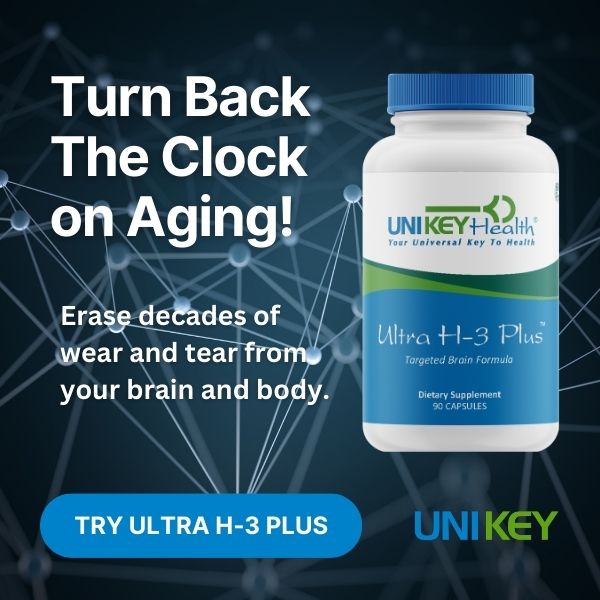The Science Behind Nutritional Balancing And Hair Mineral Analysis
Beethoven was a musical master. But he was not without unexplained health challenges.
He suffered from digestive discomfort and abdominal pain, edema, irritability and depression. He sought answers to his mysterious condition up until the day of his death.
The mystery of Beethoven’s death has now been revealed. The culprit? Lead poisoning.
Experts in hair mineral analysis studied 6 strands of the musical genius’ hair, conclusively showing the presence of 100 times the acceptable level of lead.
Lead poisoning is consistent with the symptoms he reported during years of declining health. Lead accumulation may have been due to his love of drinking a bottle of vino with dinner (wine was often prepared, stored and served in lead-lined vessels).
Had the science of hair mineral analysis been available during the time of the great composer, perhaps he would have been creating musical masterpieces well into his 80s.
Though it wasn’t yet discovered in the 1800s, the practical application of nutritional balancing and hair mineral analysis (HTMA) has been around for decades. I had the privilege of studying with a master of HTMA, Dr. Paul Eck, in the 1980s in Phoenix, Arizona.
My Own Hair-Raising Tale
As a student and a patient, I discovered a number of riveting facts about my unique health challenges—and later those of my patients. At the time of my first hair mineral analysis test, my calcium was completely off the charts (above 200 mg% when 40 mg% was the ideal).
My calcium to magnesium ratio was dramatically skewed, explaining the hypoglycemia I struggled with in those days. These results showed that I was starting to calcify—too little phosphorous to balance my high calcium indicated premature aging. When calcium is precipitated out into soft tissues the results can be arthritis, kidney stones, excess tartar build up and even cataracts.
The sedative effects of so much bio-unavailable calcium was slowing my metabolism to a grinding halt and I was quickly becoming hypothyroid. Could my love affair with cheese have been the underlying calcium culprit? Or maybe a lack of HCl due to low sodium, iodine and zinc…all of which I was deficient in?
This “calcium shell” also pointed to major copper overload. No wonder my estrogen and progesterone balance was upset! I wasn’t aware of it in those days, but I was suffering from all the symptoms of estrogen dominance. Excess copper was catapulting estrogen production, while low levels of zinc were not able to stimulate adequate progesterone levels.
The imbalance between my sodium and potassium indicated exhausted adrenal glands. Paul Eck suggested I needed manganese to raise sodium, and he was absolutely right.
The Root of All Disease?
To this day, nutritional balancing and hair mineral analysis plays a vital role in diagnosing, treating and monitoring the progress of my clients all over the world. I’ll always remember one exasperated client who struggled with osteopenia.
I urged her to do the hair mineral analysis test to get to the bottom of her struggle to maintain bone density. She regularly took adequate doses of calcium, magnesium and vitamin D—so why were her bones becoming porous and weak? She had been all over the country—to the Mayo Clinic and Scripps—seeking answers, but had found none until she tried this important test.
Hair mineral analysis revealed an extreme excess of selenium in her tissues. When we examined all of the ingredients in the various vitamins and minerals she was taking daily, I calculated that she was actually ingesting over 750 mcg of selenium per day, when 200 mcg is optimal for most people.
Selenium is mutually antagonistic to magnesium, iron and manganese—three incredibly important (yet under appreciated) minerals involved in bone health. After addressing the relative deficiencies of those minerals and removing any dietary supplement that contained selenium, her bone density improved and osteopenia reversed!
This case beautifully demonstrates the importance of nutritional balancing and hair mineral analysis to find deficiencies and possible toxic overdoses of the nutrients in your everyday supplement repertoire.
How It Works
Strands of hair are cut close to the scalp from the back of the head and analyzed to measure the concentration of 29 mineral levels and 8 toxic heavy metals in your body tissues. The mineral levels measured in HTMA are assessed individually and also in terms of their synergistic and antagonistic relationships with one another. These ratios can uncover distinct information about glandular function—insights that can transform your health and vitality!
Hair mineral analysis test results will categorize you as either a fast oxidizer or a slow oxidizer. The most common type is slow, which favors the sedative minerals calcium and magnesium. Common complaints of slow oxidizers are dry skin, dry hair, age spots on hands and face, poor circulation, feeling cold, low blood pressure, low sex drive, fatigue, hypoglycemia and weight gain.
Fast metabolizers have higher levels of the stimulating minerals sodium, potassium and phosphorous. These folks tend to be high strung, have lots of energy and are quick thinkers.
Significant Ratios
Mineral levels are measured in milligrams percent (mg%). The following is what we’d expect from a properly collected scalp hair sample. (Variations can occur due to certain medications, hormone replacement therapy, different hair treatments and the type of hair sample used. These factors can be accounted for and properly interpreted when noted prior to analysis.)
Calcium to Potassium
Thyroid function is measured with this ratio. 4.20:1 is the ideal level of Ca/K—anything above that indicates hypothyroidism, and below points to increased thyroid activity. Symptoms like dry skin, hair loss, constipation and fatigue can be better understood by looking at this ratio and making adjustments accordingly.
Sodium to Magnesium
Adrenal status is measured with the Na/Mg ratio. A ratio of 4.00:1 is most desirable. Lower levels indicate insufficiency of the adrenal medulla—likely due to exhaustion caused by prolonged stress. Long hours in the office, going through a divorce or suffering from chronic physical pain are examples of stress that will eventually deplete sodium. A high ratio suggests the adrenal glands are working overtime and possibly heading towards burnout. High blood pressure, high blood sugar and aggressive behavior are noted in these individuals.
Sodium to Potassium
Adrenal cortex activity is measured with the Na/K ratio. Sodium corresponds with aldosterone which represents adrenal cortical activity, and potassium corresponds to cortisol secretion. The ideal Na/K ratio is 2.40:1. Results above that level indicate an acute stress response or the beginning of an inflammatory reaction.
Calcium to Phosphorous
Metabolic type is determined by the Ca/P ratio. Fast metabolizers have a greater amount of stimulatory phosphorous. Slow metabolizers favor the sedative calcium. 2.50:1 is the ideal ratio between the two. Disturbances in either direction suggest inadequate protein consumption or high levels of tissue destruction.
Calcium to Magnesium
This ratio is indicative of blood sugar regulation. A balance of 6.67:1 is optimal. Pre-diabetic tendencies are especially noted at 10:1 or above, but any disturbance in this ratio shows major issues with sugar metabolism.
Zinc to Copper
This relationship indicates hormonal and emotional balance. Variances between progesterone and estrogen can be determined with this ratio. When zinc is favored, progesterone and testosterone tend to be dominant. Higher copper is associated with estrogen dominance. 8.00:1 is the ideal balance between these two minerals. Any deviation from that equilibrium can manifest in mood swings, skin irritation, insomnia and anxiety.
Iron to Copper
These minerals are mutually antagonistic, so if the ideal balance of 0.90:1 is disturbed, a relative deficiency or bio-unavailability of either mineral may develop.
The mineral readings from hair mineral analysis are more accurate than blood testing. Why? Mineral levels in your tissues reflect a true picture of your total mineral content over about 3 months of history, whereas blood mineral levels must be kept within a very small range in order to maintain homeostasis.
Levels outside of the homeostatic range would only occur during a major health crisis or prolonged extreme nutritional deficit. Blood tests are also immediately influenced by what you’ve just eaten which can mask deficiencies.
What would you like to know about your delicate mineral balance? Ask your questions below, and read more about balancing mineral levels with this test.













33 Responses
I am going to tell all my customers about your program. my 10 percent off my bill- code- TMAIO. Waiting patiencely. Thanks, Connie
Connie – did you have any problems using the discount? The code is TMA10 – we noticed you typed a capital I instead of a numeral 1 – so just wanted to be sure! If you have any problems, please contact UNI KEY at [email protected] – Best, Team ALG
This is the ideal test and I am so grateful for this info.Now to find an analyst Thank you
Hi Peter – You can get your hair analyzed through UNI KEY – your test results will include a complete report and recommendations based on your results – follow the link at the bottom of the article. Thanks, TEAM ALG
So it seems your offer of hair analysis has now ended.
Unfortunately I have only just read your article otherwise if I had read earlier would have signed up with you as you have now raised my curiosity to find out whether everything is
“normal” with me or not.
But I did enjoy your article, thank you.
Heather
Hi Heather – Just heard from the UNI KEY team and they received so much interest from the blog that the Tissue Mineral testing was temporarily out of stock online. It is back in stock and can be ordered. The 10% off coupon expires next Saturday, February 28th, so there’s still plenty of time to take advantage. Best, Team ALG
The offer ends 2/28/15
If I dye my hair, will thar affect my results a lot?
I have just read this article…how do you get a test done and what is the cost…I just did I the Healthy Gut Summit…loved it..
Thanks,
Anne
Hi Anne, You can click on the link at the bottom of the article to purchase the test from UNI KEY – https://www.unikeyhealth.com/tissue-mineral-analysis
The cost is $152 before the 10% off coupon code TMA10 which expires 2/28
Thanks,
Team ALG
Hello Rachelle:
Thanks for your post. Some women wait several weeks until there is new hair growth to test more “virgin” hair. Others simply note that their hair is dyed. Just let us know if your hair is colored.
Anne: Simply click on the link above to access the test info. Glad you liked the Gut Summit !!
Hello Dr.
I saw the gut Summit & became interested in what you explained about parasites and the importance of gut health. My question is do you agree with the concept that one should eat according to ones blood type?
Out of stock.. so sad.. i knew of this test before, but after reading this blog, i think this test may hold some answers for me. can’t wait for it to be back in stock…
Beth: The “out of stock” message is a mistake. Go ahead and order any way. I am in touch with my IT people and they should be taking down this erroneous message. Thanks so much for bringing this to my attention. Sounds like UNI KEY is slammed – and triggered the notice!
Just heard from the UNI KEY web team and the TMA is back in stock! 🙂
Dear Maria: I wrote about blood type in my 1996 book, “Your Body Knows Best” and I definitely feel that there are many aspects of blood type that are helpful and healing. AS a Blood Type B, for example, I feel so much better without chicken!!
What lab do you use to do the hair analysis? Thank you.
The Trace Elements laboratory in Texas.
I have been taking several supplements of magnesium, zinc, iodine,etc etc etc. for several months if not years. I have recently stopped all supplements in order to deal will gut health issues using Kefir and SBO probiotics and resistant starch.
Should I wait 3 months of no supplements before doing a HTMA? I think the presence of all my supplements may give skewed results…
Hi Deb, HTMA is great for evaluating your current supplemental regimen. It does not give falsely high levels of nutrients that you are supplementing with- like a blood test would. So feel free to continue taking your supplements!
I have been taking many supplements for years in an effort to improve my health. I have recently stopped taking any of them to deal with gut health issues using fermented foods.
Would I need to wait at least 3 months before doing a HTMA to get a true picture of what is going on or would it be beneficial to see the numbers even accounting for some supplementation?
sorry for the duplicate post- my first one showed up only after I wrote the second post.
If you have this test done will there be recommendations included with the results for how to correct imbalances? Does Anne Louise offer consultations or is there some way to talk to someone about our results? Also, after submitting a hair sample what is the expected wait time for test results?
The lab results include a 15-30 page explanation with detailed dietary advice and recommended supplements. Ann Louise is not offering consultations at this time, but after completing the test you can arrange for a free one-time 20 minute consultation with her assistants. From the time you submit your hair sample, the whole process usually takes between 2 and 3 weeks.
Once again out of stock…what’s the new anticipated in stock date?
Hi Anna! TMAs should be available again by Tuesday or Wednesday. If you enter your email address on the product page, you will get an email notification as soon as they are available again. Call in and mention this post and you can still get the discount!
I just read that the 10% discount will still be honored since the test was out of stock the past couple of days. Thank you so much. I look forward to getting some answers.
Hi Dr Ann Louise! I loved the information about my body that I gained through the hair strand analysis tests which i have completed. I have an “off-topic” yet pertinent question. I order often from your store, UniKey. I recall reading somewhere that your packing materials are made from vegetable products and completely biodegradable. Well, my golden retriever, who loves all things edible, including fruits and veggies, ate an entire box of these little, white curly-q’s! What are they made out of? Thanks so much!
The packing peanuts are made from corn starch. Not the ideal meal, but certainly not dangerous! Thanks for your question 🙂
I am interested in ordering the hair mineral test. Is the discount still available?
Hi Tonya, The discount has expired, but if you phone in your order and mention this blog UNI KEY will ship the test kit to you for free! 800.888.4353
Hi Anne,
Do the ratios you mention in this article apply to HTMA from Doctor’s Data or just HTMA from Trace Elements? Thanks!
The ratios apply to the HTMA from Trace Elements.